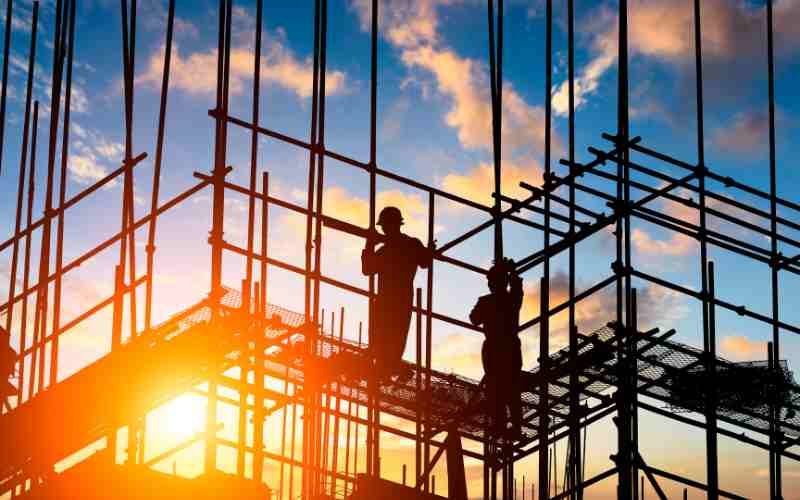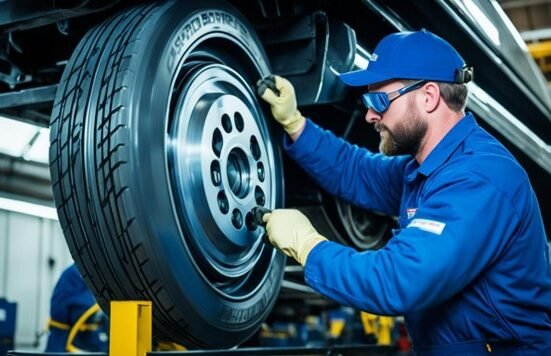Whether we’re amid an economic boom or a freefall, there’s one industry that never sees much fluctuation, and that’s the construction industry. Be it public or private property, there’s always something that needs to be built, repaired, or perfected, so it’s safe to say that construction workers are in high demand all year round.
On a larger scale, construction workers help create safer, more aesthetically designed, stable community structures and can uplift communities as a whole. If you’re in the construction industry, you’ll know just how important every worker is. And this makes it even more necessary to provide the highest workplace safety standards and ensure that your employees work in a safe, controlled environment. However, figuring out how to ensure worker safety during construction can prove challenging, especially when they’re diverse.
If you’re a little confused, keep reading below.
1. Protect their eyesight
One of the most dangerous and unfortunately, most common injuries that construction workers face are vision-related. Construction sites can be pretty hazardous for unprotected eyes, with dust and debris flying around almost constantly. Using regular goggles in such environments can be a big mistake, as not only will they fail to protect your workers properly, but they may even cause additional damage. Normal safety glasses can commonly cause eye fatigue and headaches which can be damaging in the long run.
Instead, consider providing your workers with prescription safety glasses. Prescription safety glasses allow your workers to have perfect vision while protecting their eyes from debris on-site. Construction work is a rapidly growing sector in Canada, and providing prescription safety glasses to workers can boost performance immensely. If you look up “Prescription safety glasses Canada you won’t have to opt for the usual boring, dull designs. Instead, you can opt for chic, personalized designs that give your workers maximum coverage while always looking fashion-forward.
2.Inspect all tools
Even the smallest construction sites have a variety of tools and equipment which need to be used. Without machinery that works well, workers find it challenging to carry out their tasks efficiently and complete projects on time. Moreover, if your machinery has any faults or defects, it can seriously threaten your worker’s safety. Any accidents and injuries on construction sites can become severe and eventually the basis of long-drawn courtroom battles.
So, you can avoid such mishaps through regular, thorough inspections. If you have any work equipment that hasn’t been used for a while, ensure it’s checked out before the workers use it again. Moreover, if you or your workers feel something is amiss with the machinery, perhaps some wobbliness or strange sounds, a proper inspection may be overdue. Paying attention to these seemingly small cues can help you avoid a bigger issue and can help you keep your workers safe.
3. Ensure proper training
Sometimes ensuring that you have all the proper tools and safety equipment isn’t enough if your workers aren’t well-trained, they may still be open to workplace injuries. Without proper training, your workers won’t know how to handle the equipment or ensure their safety. It can endanger not only their safety but that of other workers as well.
Health and safety training workshops are thus essential and can help make your workplace a safer space for all your construction workers. Hiring expert personnel can help you minimize risk as much as possible. Moreover, hosting health and safety workshops just once isn’t enough. It would help if you kept your workers updated on all new safety procedures whenever there’s a new development. Besides training them to use equipment, having your employees take basic first aid courses can be exceptionally helpful. It can help you ensure that if something goes wrong, you have someone onboard who can minimize damage immediately.
4. Visible signs
Most employers often neglect this step, which can cause problems should anything go wrong. It can be challenging for employees to navigate without proper signage indicating where things are. And this can seriously impair efficiency on the job. Besides helping them navigate different site locations, signs indicate where safety equipment and other items are stored.
Moreover, all workers must know where all entry and exit points are located. In the case of a flooding, fire, earthquake, or any other human-made or natural disaster, your employees need to be able to exit the site as soon as possible. More importantly, ensure your employees know where to exit if they use large equipment and hazardous material and where all first aid equipment is stored. Attention to these minor details can help you minimize time lost in dire situations.
5.Store hazardous materials safely
Paying attention to how hazardous materials are stored can help minimize construction site damage. Construction workers often need to work with a host of chemicals, and ensuring they’re stored in a safe, controlled environment can be challenging. It may seem like extra effort, but going the extra mile and ensuring proper storage can help you maintain their efficacy for longer and protect your workers at all costs.
Any accidental spills, leakages, or exposures can be pretty damaging, so doing your due diligence can help foster a safer environment for your workers.
6.Ensure proper communication
Ensuring that your workers communicate clearly with one another and with management can be imperative when it comes to preventing a disaster. In the case of any emergency, you want your workers to be able to reach each other immediately or inform the rest of the team regarding the situation. And this depends partly on the training procedures and the communication facilities available.
Your supervisors thus need to be aware of where lone workers work commonly and need to keep constant checks on them. Moreover, you need to have functional and effective alarm systems to help workers alert other team members of any emergency.
Conclusion
Operating a construction site is a huge task, requiring utmost responsibility and vigilance. There can be several factors to consider simultaneously. This guide can help you keep a better track of what to do and what not to do to ensure that your workers are safe always. These tips can help create a site that is not just safe but promotes efficiency and drives high performance. Besides, playing safe when it comes to worker safety not only boosts work performance but helps limit legal issues.










